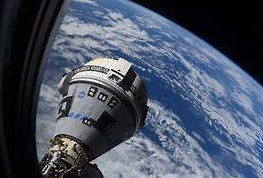NASA announces Starliner’s undocking after a review, with crewed missions delayed until next year.
NASA has announced that Boeing’s uncrewed Starliner capsule will undock from the International Space Station (ISS) on September 6, 2024, following a thorough review of the capsule’s systems. The decision comes after delays in the spacecraft’s mission timeline, mainly due to technical issues identified in the Starliner’s propulsion system. These issues raised concerns over the capsule’s readiness for crewed flights, pushing back its planned return of astronauts aboard the vehicle.
Last week, NASA confirmed that the two astronauts who flew to the ISS aboard Starliner in June would return to Earth early next year, but in a SpaceX vehicle instead. This decision stems from concerns regarding the Starliner’s propulsion system, which experienced several malfunctions in the first 24 hours of its flight to the space station. Given the system’s crucial role in safely returning crewed missions, NASA determined that it posed too great a risk for immediate crewed flights.
The upcoming undocking of the uncrewed Starliner marks a significant milestone in the mission, with the spacecraft returning to Earth without any crew onboard. While the capsule’s mission has faced setbacks, it remains a key component of NASA’s ongoing efforts to develop reliable, American-made space transportation. NASA’s ultimate goal is for the Starliner to successfully carry astronauts to and from the ISS, in competition with SpaceX’s Dragon capsule, which is already operational for crewed missions.
Despite the Starliner’s current challenges, Boeing has expressed confidence in the spacecraft’s eventual readiness for crewed missions. In the meantime, NASA is working with Boeing to resolve the technical issues and improve the spacecraft’s systems. As the space agency continues its partnership with Boeing, both parties are committed to ensuring that the Starliner is safe for future crewed missions, including the return of astronauts to the ISS.
While the undocking marks a positive step for the Starliner program, the delay of crewed flights is a reminder of the technical hurdles involved in human spaceflight. NASA has emphasized that the priority remains the safety of astronauts, and it will not rush the return of crewed missions until the necessary fixes are fully implemented and tested.
The decision to utilize SpaceX’s vehicle for astronaut returns in the interim showcases the agency’s flexible approach to spaceflight, ensuring continuity in crewed missions despite the delays with Boeing’s Starliner. SpaceX’s Dragon capsule has already demonstrated its reliability in crewed missions, providing a safer alternative until Starliner is deemed ready.
As the Starliner capsule prepares for its uncrewed return, all eyes will be on Boeing and NASA’s next steps in refining the spacecraft’s design. The space community will be watching closely to see how Boeing addresses these technical issues, with the eventual goal of restoring the Starliner to operational status for NASA’s crewed spaceflights.

